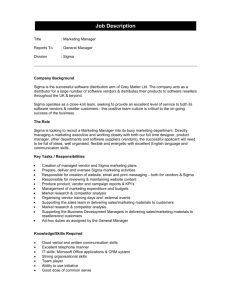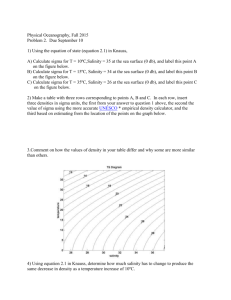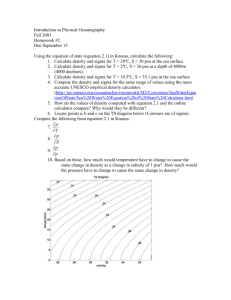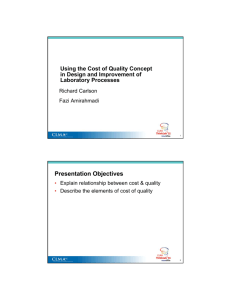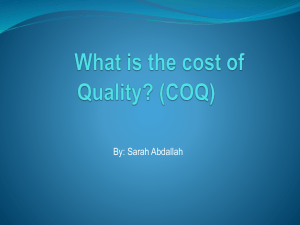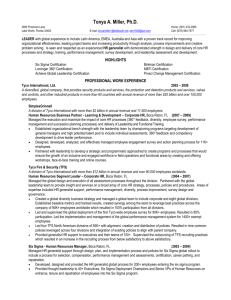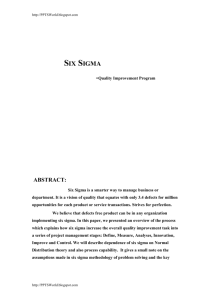Cost of Quality: Not Only Failure Costs
advertisement
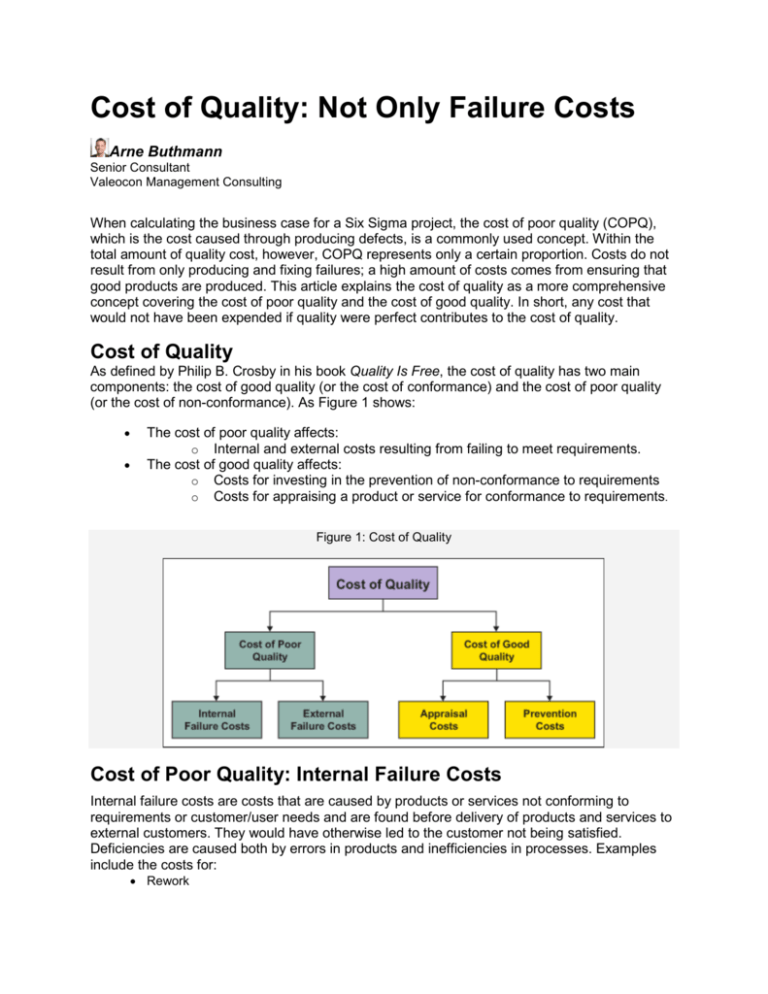
Cost of Quality: Not Only Failure Costs Arne Buthmann Senior Consultant Valeocon Management Consulting When calculating the business case for a Six Sigma project, the cost of poor quality (COPQ), which is the cost caused through producing defects, is a commonly used concept. Within the total amount of quality cost, however, COPQ represents only a certain proportion. Costs do not result from only producing and fixing failures; a high amount of costs comes from ensuring that good products are produced. This article explains the cost of quality as a more comprehensive concept covering the cost of poor quality and the cost of good quality. In short, any cost that would not have been expended if quality were perfect contributes to the cost of quality. Cost of Quality As defined by Philip B. Crosby in his book Quality Is Free, the cost of quality has two main components: the cost of good quality (or the cost of conformance) and the cost of poor quality (or the cost of non-conformance). As Figure 1 shows: • • The cost of poor quality affects: o Internal and external costs resulting from failing to meet requirements. The cost of good quality affects: o Costs for investing in the prevention of non-conformance to requirements o Costs for appraising a product or service for conformance to requirements. Figure 1: Cost of Quality Cost of Poor Quality: Internal Failure Costs Internal failure costs are costs that are caused by products or services not conforming to requirements or customer/user needs and are found before delivery of products and services to external customers. They would have otherwise led to the customer not being satisfied. Deficiencies are caused both by errors in products and inefficiencies in processes. Examples include the costs for: • Rework • • • • • • • • Delays Re-designing Shortages Failure analysis Re-testing Downgrading Downtime Lack of flexibility and adaptability Cost of Poor Quality: External Failure Costs External failure costs are costs that are caused by deficiencies found after delivery of products and services to external customers, which lead to customer dissatisfaction. Examples include the costs for: • Complaints • Repairing goods and redoing services • Warranties • Customer bad will • Losses due to sales reductions • Environmental costs Cost of Good Quality: Prevention Costs Prevention costs are costs of all activities that are designed to prevent poor quality from arising in products or services. Examples include the costs for: • Quality planning • Supplier evaluation • New product review • Error proofing • Capability evaluations • Quality improvement team meetings • Quality improvement projects • Quality education and training Cost of Good Quality: Appraisal Costs Appraisal costs are costs that occur because of the need to control products and services to ensure a high quality level in all stages, conformance to quality standards and performance requirements. Examples include the costs for: • Checking and testing purchased goods and services o In-process and final inspection/test o Field testing o Product, process or service audits o Calibration of measuring and test equipment The total quality costs are then the sum of these costs. They represent the difference between the actual cost of a product or service and the potential (reduced) cost given no substandard service or no defective products. Many of the costs of quality are hidden and difficult to identify by formal measurement systems. The iceberg model is very often used to illustrate this matter: Only a minority of the costs of poor and good quality are obvious appear above the surface of the water. But there is a huge potential for reducing costs under the water. Identifying and improving these costs will significantly reduce the costs of doing business. Figure 2: The Iceberg Model of Cost of Quality The Six Sigma Philosophy of Cost of Quality What is the relation between the cost of good quality and the cost of poor quality? The traditional view would be to conclude that if a company wants to reduce defects and by this reduce the cost of poor quality, the cost of good quality would have to be increased, meaning higher investments in any kind of checking, testing, evaluation, training of operators, etc. Following the Six Sigma philosophy, however, of building quality into process, service and products and doing things right the first time, the increase of the cost of good quality, while striving for zero defect performance, can be smoothed if processes get better. As Figure 3 shows, business processes with better process sigma will have significantly lower prevention and appraisal costs. Although you will never fully eliminate appraisal and prevention costs (as opposed to failure costs that in an ideal zero defect world would also be zero), their reduction due to better process performance will be significant. Figure 3: Traditional Management View vs. Six Sigma Philosophy Table 1 shows how dramatically the cost of quality as a percentage of sales decreases if the process sigma improves. Table 1: Sigma Level and the Cost of Quality Sigma Level DPMO Cost of Quality as Percentage of Sales 2 298,000 More than 40% 3 67,000 25-40% 4 6,000 15-25% 5 233 5-15% 6 3.4 Less than 1% Assuming that the average performance of a company is 3 sigma, 25 percent to 40 percent of its annual revenue gets chewed up by the cost of quality. Thus, if this company can improve its quality by 1 sigma level, its net income will increase hugely.


